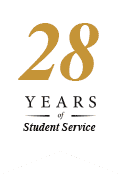by Eric Peters

Logan Haworth loves to know how things work. The 7-year-old Richmonder relishes programming apps on his laptop and exploring museums, especially the Children’s Museum of Richmond (CMoR).
Instead of playing with the exhibits at CMoR, Logan often peeks around the back of them or looks inside to find out where a ball came from or how one component works with the next. A new car exhibit with removable parts is perfect for this, according to Shannon Haworth, Logan’s mother.
When Logan visits places like the museum, it’s fun, stimulating and educational – all of the things it should be—but sometimes it’s also a little too much.
Logan experiences challenges due to autism, sensory processing disorder and ADHD. When the lights get too bright or the other kids get too loud, he needs time to sit alone or with his mom and regulate himself.
That’s one of the reasons Shannon takes Logan to CMoR about twice per month. She said that in addition to the accommodating physical aspects of the museum, such as space to sit quietly for overwhelmed children, the atmosphere there is one of complete inclusion.
“It’s a place that’s so family friendly and understanding,” Shannon said. “I don’t have to worry when he’s there; it’s just more inviting to parents and their children who have special needs.”
The physical aspects and overall inclusive atmosphere Shannon mentions can be attributed, in large part, to a partnership between the museum and Virginia Commonwealth University.
Supported by a 2012-2013 VCU Community Engagement Grant, a group of VCU faculty and students have been working with CMoR staff to assess and adapt the physical and learning environment of the museum and to develop training to support the engagement of young children with disabilities and their families.
The project brought together eight faculty and staff members and 57 students from the School of Education and the School of Allied Health Professions. Children’s Hospital of Richmond at VCU and Children’s Hospital Foundation personnel also participated in various aspects, including serving on the project’s advisory board. The project has continued and expanded beyond the original grant to become an ongoing partnership with the museum.
“I want families to feel safe, secure and comfortable when they walk in,” said Liz Pearce, CMoR director of parent engagement. And modifications the VCU team has helped implement make visiting the museum easier, she said.
Universal design for learning
Modifications the VCU team has identified and implemented in the physical environment at the museum include communications tools in the Town Square exhibit that allow children to push buttons or point to pictures if they’re having trouble verbalizing; wheelchair-accessible outdoor play houses and equipment; several projects in the art room; and access to iPads with exhibit-themed and sensory calming apps.
These improvements were completed with the concept of universal design in mind, said Carole Ivey, Ph.D., assistant professor in the VCU School of Allied Health Professions’ Department of Occupational Therapy.

VCU assistant professor Carole Ivey (right) collaborated with Children’s Museum of Richmond’s Liz Pearce (left) to modify areas of CMoR to make them more accessible for children with special needs.
“We looked at it in terms of, ‘How can we set up things that can be used by everybody, but also facilitate learning for children with disabilities?'” she said.
For instance, in the art room, Ivey’s occupational therapy students have conceptualized and assembled various adaptive learning tools such as paintbrushes with Velcro straps and markers attached to large, easy-to-grasp toy cars. All children who visit the museum can use these art supplies, not just those with disabilities, said Pearce.
Another adjustment arose when VCU occupational therapy student Brooke Sally noticed one day that the easels in the art room were at a fixed height and included an ill-placed crossbar about halfway up the legs.
In response, she designed and built a vertically adjustable easel that didn’t include the crossbar. This allowed for not only children in wheelchairs to scoot in close and reach the art surface, but also for shorter and younger children to reach it.
In addition to helping implement physical changes at CMoR, VCU faculty and students have helped train and prepare museum staff to host field trips in a more inclusive and universally beneficial way. Ivey and her VCU colleagues have implemented training programs and provided supplemental or adjusted materials to help the museum teachers instruct all students.
“They have a lot of field trips that are scheduled, and with them more and more children with disabilities,” Ivey said. “And it’s about figuring out, ‘How do we manage a whole class of 25 or 30 students—and a few with disabilities—and still make this a good field trip for everyone?'”
“The thing with making it universal is that we don’t know who’s coming out,” Pearce said. “It’s a pleasant surprise every day, as we don’t know if it will be a child with sensory issues, speech and language issues, a hearing disability, or a visual impairment. So that’s why we want to keep it accessible for everyone.”
Research
Ivey and CMoR are working together to advance public awareness, engagement and understanding of the scientific study of children’s learning and development.
A project this semester is focusing on praxis, or the ability to conceive of, plan, sequence and carry out unfamiliar motor actions. This complex planning and sequencing allows children to interact with their environment in everyday tasks, such as getting dressed, playing games and participating in sports.
“To study children’s development of praxis, we are using three tests that look at different aspects of the process,” said Ivey, who is working with VCU Department of Occupational Therapy professor Shelly Lane, Ph.D., on the project. “We will be able to look at how children at different ages perform on the test, which will help us be able to use these tests in the future to identify children that may have difficulty.

When pressed, an audible switch toy helps children who have limited verbal communication to communicate during dramatic play.
“There are a lot of things that we can learn about children’s development here at the museum because it’s happening actively every day,” Ivey said. “And our research matches (the museum’s) need for teaching because while we’re doing the research we can be teaching children and the adults about what research is, how we do research, what praxis is and what parents can do to encourage their child to develop motor skills or cognitive skills.”
Pearce agreed. “My job is to engage the parent,” she said. “Having the researchers here on the floor at the museum is a direct way of teaching skills to parents in the moment.”
Results
Ivey is quick to point out that when she and her team first arrived at CMoR to assess its level of accessibility, the museum was already doing many things very well. She cited characteristics and programs ranging from the museum’s layout, which facilitates social skills, to special events with small crowds and dimmed lighting, which cater to children with sensory processing disorders.
These positive steps that CMoR had already taken, coupled with the changes and programs VCU’s interdisciplinary team of faculty, staff and students continues to help implement, has made the museum one of the nation’s most accessible for children with disabilities.
The Association of Children’s Museums, with the help of a grant from CVS Caremark Charitable Trust, selected CMoR to be one of 10 exemplary children’s museums demonstrating best practices in accessibility. CMoR will be featured in an upcoming issue of ACM’s Hand to Hand journal, the leading professional journal for the children’s museum field.
“Being recognized as a top 10 children’s museum for advancing accessibility is thrilling on many levels,” Pearce said. “Not only does it illustrate our successful collaboration, but it also informs the greater community that all children are welcome at the Children’s Museum of Richmond, regardless of their background, their learning style or their abilities.”
Logan and his mom are well aware of this openness, but to them, the CMoR/VCU partnership means one simple but important thing.
“It means socialization,” Shannon said. “He gets to be out in the world around typical kids, and he gets to be a kid.”
Explore further: Occupational therapy aids kids with autism, sensory issues
Provided by Virginia Commonwealth University



